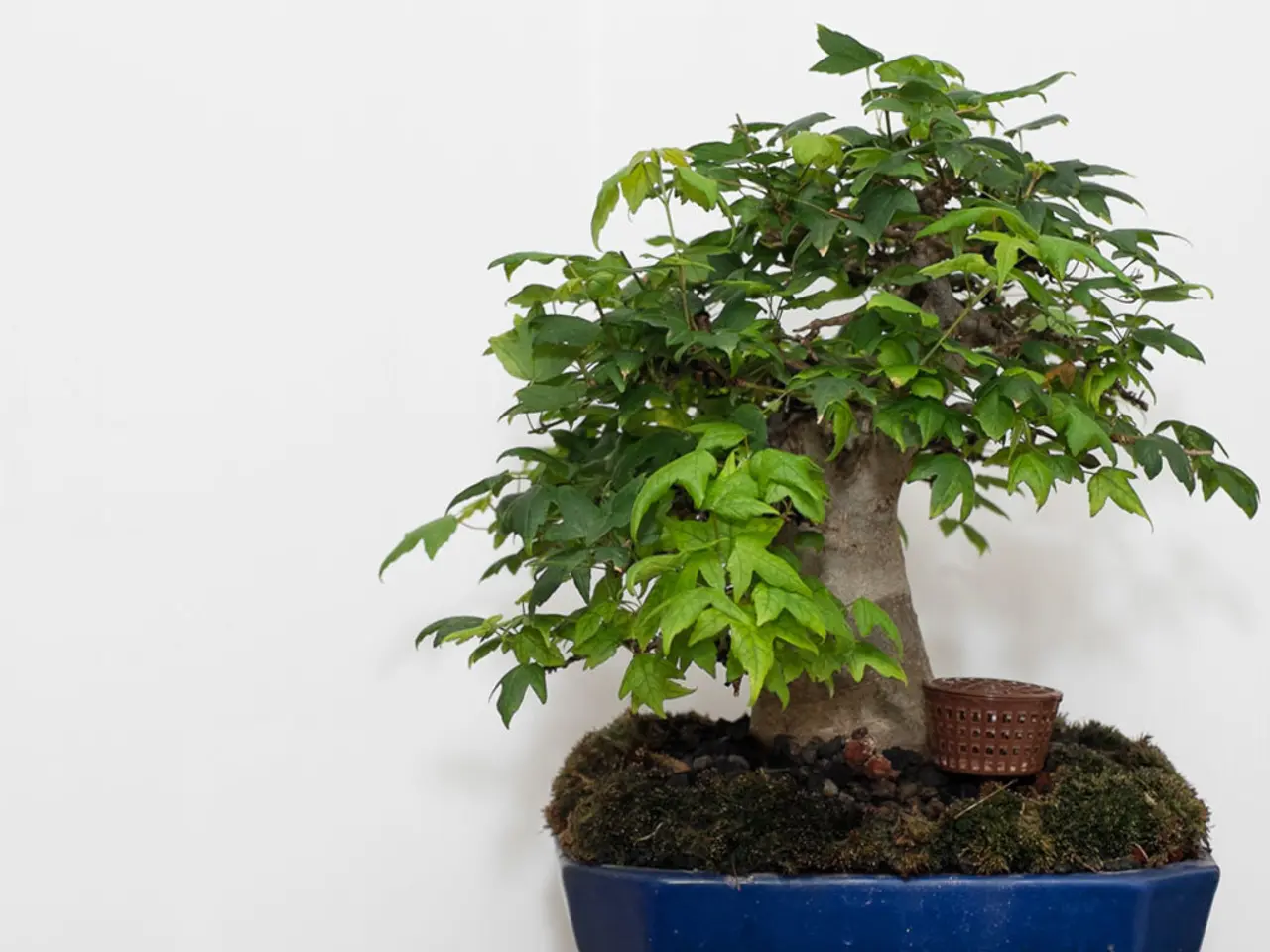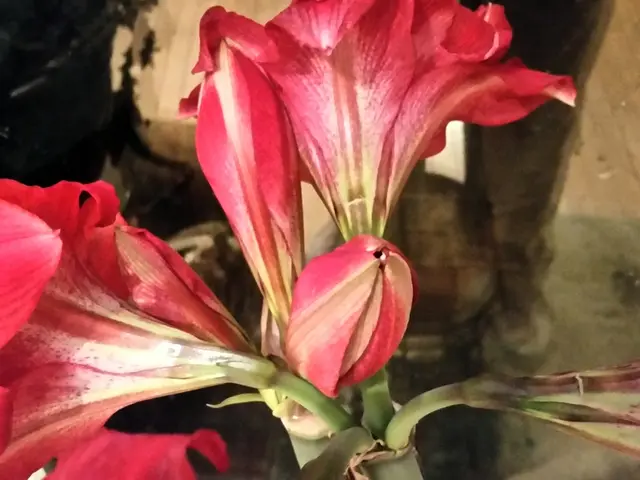Bonsai Nurturing Guide: Critical Items and Methods
In the art of bonsai, the tools used are as essential as the trees themselves. To ensure their longevity and efficiency, it is crucial to implement proper cleaning, sharpening, and storage techniques.
**Cleaning**
Cleaning bonsai tools immediately after use is key to preventing rust and buildup that can cause dullness or damage to the blades. A soft cloth or brush and mild soapy water or rubbing alcohol can be used to wipe the tools clean. It is also important to dry tools thoroughly before storage to avoid moisture that leads to rust.
**Sharpening**
Regular sharpening using a sharpening stone or fine file is necessary to maintain a sharp edge, which allows for clean cuts that promote healthy bonsai growth and minimise branch damage. For valuable bonsai tools, it may be best to take them to a professional sharpener. Specialised tools like pruning shears and concave cutters require clean, sharp edges to create smooth cuts that heal well.
**Storage**
Storing tools in a dry, ventilated area is essential to prevent rust and corrosion. Consider using a toolbox or dedicated bonsai tool roll to keep tools organised and protected. Occasionally applying a light coat of oil (such as mineral oil) to metal blades can form a protective barrier against moisture and rust.
**Additional Tips**
Using the right tool for each task will help avoid unnecessary wear on tools and ensure better plant health. Regular inspection of tools will help catch any signs of rust or dullness early, allowing for timely maintenance.
By following these cleaning, sharpening, and storage techniques, bonsai enthusiasts can ensure their tools remain efficient, safe, and long-lasting, supporting the delicate care required for bonsai trees.
**Caring for Pliers and Cutters**
Maintaining a meticulous cleaning regimen is crucial for prolonging the lifespan of pliers and cutters. Regularly inspect and sharpen the blades to maintain their precision and prevent dulling. Concave cutter care techniques involve gently wiping the blades with a soft cloth, immersing the cutters in a mild soap solution, rinsing and drying, and applying a light coat of oil to protect the metal from corrosion.
**Wire Cutter Maintenance**
Regularly clean and maintain wire cutters to prevent the accumulation of residue, which can lead to rust and corrosion. Inspect handles for signs of wear, such as cracks or splinters, and address them promptly. Regularly apply a rust-inhibiting substance, such as silicone or wax, to protect metal surfaces from corrosion.
**Shaping Tools**
Shaping tools are employed to manipulate the tree's structure, creating intricate designs and patterns that showcase the artist's skill. Proper storage is crucial to preventing damage, rust, and dulling of bonsai tools, as it shields them from environmental elements and prevents accidental knocks or scratches.
**Bonsai Toolkit**
Bonsai toolkits comprise precision-crafted instruments, including cutting tools, shaping tools, and miscellaneous tools, each designed to serve a specific purpose in the art of miniature tree cultivation. A well-organized toolbox containing wire cutters, branch trimmers, root hooks, a soft-bristled brush, microfiber cloth, and gentle cleaning solutions is essential for effective bonsai tool care.
**Proper Tool Maintenance**
Proper tool maintenance involves meticulous cleaning to prevent sap, debris, and contaminants from compromising tool performance and longevity. To maintain the integrity of bonsai tools, consider a schedule that includes weekly cleaning, monthly sharpening, and quarterly deep cleaning and lubrication.
**Investing in Quality Tools and Cases**
Investing in a high-quality tool case or bag specifically designed for bonsai tools can help maintain their condition and prolong their lifespan. A well-organized tool chest and protective cases can become a sanctuary for bonsai tools, shielding them from the elements and preserving their precision.
**Understanding Bonsai Tools**
Understanding the different types of bonsai tools is vital for mastering various bonsai techniques and revealing the full potential of your miniature trees. A high-quality whetstone is an essential component in the sharpening process, as it helps to refine and maintain the precise cutting edge required for peak tool performance.
**Conclusion**
With the right care and maintenance, bonsai tools can be a valuable asset in the art of bonsai cultivation. By following these guidelines, bonsai enthusiasts can ensure their tools remain efficient, safe, and long-lasting, supporting the delicate care required for bonsai trees.
Here are the sentences containing the given words:
- The art of bonsai will greatly benefit from a well-maintained home-and-garden toolkit, specifically tailored for bonsai tasks.
- Proper storage of the various home-and-garden tools, including pruning shears and concave cutters, is crucial to prevent damage and ensure smooth cuts that promote healthy bonsai growth.








